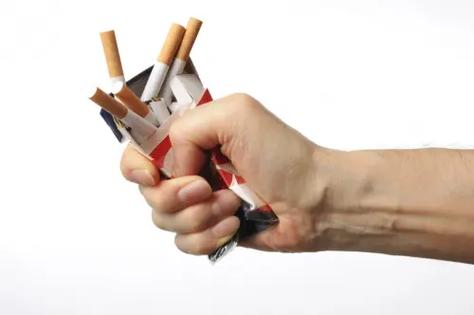A Comprehensive Guide to Halting Vape Auto-Firing for Good
There's a moment of pure panic for every vaper. You pick up your device, maybe from your pocket or your desk, and you notice it's warm. You hear a faint, ominous sizzling sound. Your vape is firing on its own, without you pressing the button. This is auto-firing, and it's more than just an inconvenience—it's a serious safety hazard that can lead to a burnt-out coil, a ruined device, a drained battery, or in worst-case scenarios, a potential fire.
But don't panic just yet. In almost all cases, you can diagnose and fix a vape that's auto-firing. This guide will walk you through the entire process, from simple quick fixes to more involved solutions, ensuring you can tackle this problem safely and effectively. We'll cover everything from the common causes of automatic firing to the step-by-step troubleshooting process that will get your device back in safe working order.
Understanding the "Why": Common Causes of Auto-Firing
Before we dive into the fixes, it's crucial to understand what's causing the problem. An auto-firing vape is essentially a device that's completing an electrical circuit when it shouldn't be. The culprit is almost always related to the firing mechanism or the internal environment of your device.
-
E-Liquid Leakage (The Most Common Culprit): Vape juice is not a great friend to electronics. Over time, or due to a faulty pod or tank, e-liquid can seep into the device's internal components, specifically the firing button and the chipset. E-liquid is slightly conductive and can create a "bridge" that tricks the device into thinking the button is being pressed. This is the primary reason for vape pen firing automatically after it's been filled or stored on its side.
-
Faulty or Sticky Fire Button: The physical button itself can be the problem. If it's damaged, worn out, or has debris stuck underneath it, it might not spring back properly after being pressed, causing it to remain in a "pressed" state.
-
Internal Debris and Dust: Just like any other electronic device, dust, pocket lint, and other small particles can find their way into the small gaps around the fire button. This buildup can physically prevent the button from returning to its off position.
-
Internal Component Failure: While less common, the device's internal chipset or wiring can fail. A short circuit on the motherboard can mimic a button press. This is a more serious issue and often means the device is beyond economical repair.
-
Moisture and Condensation: Exposure to high humidity, rain, or even bringing a cold vape into a warm room can cause condensation to form inside the device, leading to the same short-circuiting issues as e-liquid.
Your Step-by-Step Troubleshooting and Repair Plan
Always start with the simplest and safest solutions before moving on to more complex ones. Safety First: Before attempting any fix, always remove the pod/tank and the battery (if it's a removable battery mod). This eliminates any risk of accidental firing or short circuits during your repair.
Step 1: The Immediate Response and Basic Cleaning
If your vape starts auto-firing, your first action should be to quickly unscrew the tank or remove the pod to break the circuit and stop the coil from burning. Then, remove the battery if possible.
- Exterior Cleaning: Take a cotton swab or a soft cloth slightly dampened with isopropyl alcohol (rubbing alcohol) and carefully clean around the fire button. Work the button in and out, pressing it multiple times while cleaning to try and dislodge any sticky residue or debris. Isopropyl alcohol evaporates quickly and leaves no residue, making it ideal for electronics cleaning.
- The "Blow Out" Method: Turn the device upside down and give it a few firm blows into the button crevice and the 510 connection area. This can sometimes dislodge loose particles causing the problem. This is a quick and easy fix for vape auto-firing issues that can surprisingly work for minor debris.
Step 2: Deep Cleaning for E-Liquid Damage
If basic cleaning doesn't work, e-liquid ingress is the likely suspect. Here’s how to perform a more thorough clean to stop vape from firing on its own.
- Disassemble What You Can: Consult your device's manual (or find a teardown video online for your specific model) to see if you can safely remove any panels or the fire button itself. Many pod systems have a removable panel that gives you access to the internal circuitry.
- The Isopropyl Alcohol Bath (for the main body): For the device's body (with the battery removed), you can use a cotton swab soaked in isopropyl alcohol to gently clean the circuit board and the area around the fire button's internal contacts. Be gentle—you don't want to break any solder joints or tiny components.
- Drying is Crucial: After cleaning, the most important step is to let the device dry completely. Leave it in a warm, dry place for at least 24-48 hours. Do not use a hairdryer or oven, as excessive heat can damage the electronics. This waiting period allows all the residual alcohol and any remaining moisture to evaporate fully.
Step 3: Addressing a Sticky or Faulty Fire Button
If the button itself feels mushy, sticky, or doesn't click properly, it needs direct attention.
- Deep Button Cleaning: With the battery removed, apply a few drops of isopropyl alcohol directly into the seam around the button. Press the button repeatedly, at least 50-100 times, to work the alcohol inside and dissolve any hardened e-liquid or grime.
- Physical Inspection: If you can safely access the button mechanism, check for any visible damage or deformation. Sometimes, the physical plastic of the button can crack or warp.
Step 4: Advanced Fixes and When to Seek Professional Help

If you've tried all the cleaning steps and your vape mod keeps firing automatically, the problem is likely a hardware failure.
- Checking for Corrosion: Open the device and look at the circuit board. If you see green, blue, or white crusty residue on the metal components, that's corrosion. While you can try to clean it with isopropyl alcohol and a soft brush, corrosion often causes permanent damage.
- The Reality of Internal Damage: A failed MOSFET (a type of transistor on the circuit board) or other internal chip is not something a typical user can repair. Soldering on these tiny, delicate boards requires specialized tools and skills.
At this point, the safest and most cost-effective solution is often to replace the device. Continuing to use a vape with a known electrical fault is a significant safety risk. If your device is still under warranty, contact the manufacturer or the vendor you purchased it from.
Prevention is Better Than Cure: How to Avoid Auto-Firing
To prevent this scary situation from happening again, adopt these simple habits:
- Prevent Leaks: Always store your device upright. Ensure your coils are properly primed and installed, and that all O-rings on your tank or pod are intact and in place. This is the single most effective way to prevent vape auto-firing problems.
- Regular Maintenance: Make it a habit to wipe down your device weekly. Clean the 510 connection and around the fire button with a dry cloth to remove any e-liquid or dust before it can seep inside.
- Proper Storage: Don't carry your vape loosely in a pocket full of lint and debris. Use a dedicated case or a separate clean pocket.
- Battery Care: For devices with removable batteries, always use a battery case. A torn battery wrap can cause a short circuit, which could lead to auto-firing or worse.
Dealing with an auto-firing vape can be frustrating, but by following this structured guide, you are equipped to diagnose the issue, apply the correct troubleshooting vape auto-firing steps, and determine whether a repair is possible or a replacement is necessary. Your safety is the most important factor. When in doubt, it's always better to retire a faulty device and invest in a new, safe one. Happy and safe vaping










